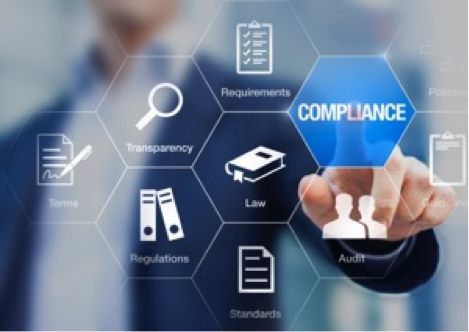(Updated 01/27/2021)
Compliance audits are critical for all businesses, no matter the industry. Not only are there costly penalties when violations are discovered, but when a business is not in compliance with specific regulations, it can be particularly damaging to its reputation.
Whether your company is most concerned about PCI, SOX, HIPAA, NERC, ISO 27001, FFIEC, FISMA or FERPA compliance frameworks, when it comes to auditing compliance of dozens or even hundreds of deployed applications, IT is not exempt from its share of requirements (or pain). Your whole company, including the IT team, should be prepared to meet and exceed compliance requirements.

8 Tips to Help You Pass Compliance Audits
To better prepare for a compliance audit, here are a few tips that companies in any industry can use:
1. Perform a Self-Compliance Audit
The best way to figure out how your company will fare in a compliance audit is to conduct one in-house. You could appoint an internal team to perform the audit, but an independent auditor may prove a better alternative, especially if internal resources are scarce. Either way, being prepared with the proper documentation and follow-up processes to correct any deficiencies are essential to passing any audit.
2. Identify Users Accessing Shared Credentials
Require individual credentials in a secondary identification window in order to log onto a server or network, even when using a shared account (such as “administrator” or “root”). This will ensure that every action will be attributed to an individual user, and therefore easier to monitor.
3. Ensure You Have a Compliance Audit Trail
An audit trail of user actions, including a record of the changes that have been made to a database, file or other applications, is a key factor in passing a compliance audit. You must be able to track exact actions and have textual user activity logs for reporting.

4. Monitor Activity of Privileged Users, Business Users & Vendors
Visual recordings allow for easier monitoring of all user activity on any server or workstation. This ultimately makes auditing and ensuring compliance easier, no matter what applications or resources the user accessed. It’s bulletproof evidence of who did what and how they did it.
5. Stay Tuned to Security Events Within Your Industry
If a competitor experiences a security incident, analyze your internal systems and ensure all access into your network is protected. Trouble at another company within your industry may prompt compliance auditors to investigate your organization for similar security inefficiencies.
6. Watch Out for New Regulations
Technology is always changing, and staying compliant involves myriad people and systems. It’s important to stay up-to-date on the changing security landscape to anticipate the enforcement priorities within regulatory agencies.
7. Train All Users on Security Policies
Ensure that all users (both remote and on-site) have been informed of, and have agreed to security policies and procedures that establish how confidential information is to be handled, backed-up/recovered, archived and/or destroyed. Additionally, train users on Internet safety concerns, including spear-fishing emails, how to create strong passwords, and other security topics related to your business.
8. Be Prepared to Quickly Produce Documentation
Historically, companies might have had days or weeks to furnish documentation requested by a regulator. Now, compliance auditors expect companies to produce documents quickly, even on-demand in some cases.
Final Thoughts
These tips can help an enterprise pass a compliance audit, but it’s important to know that ultimately, every compliance violation can be traced back to the specific actions of a particular user - whether it’s an employee or a contractor or remote vendor involved in the collection, storage and transmission of sensitive data. Ensuring the safety of sensitive data in accordance with compliance regulations should be the first priority for any security team.
The good news is, we can help! Proofpoint provides monitoring and investigation software to ensure your IT organization complies with compliance regulations. Proofpoint ITM monitors and audits all actions taken on an organization’s systems to help meet stringent auditing requirements. We help companies not only protect data and reduce risk but ensure they meet and exceed compliance requirements by offering unmatched visibility into user activity.

